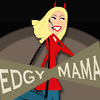Once again I’m at the beach with my kids and extended family, typing the names of all our sunscreens into Environmental Working Group’s Sunscreen Guide. I neglected to take my own advice from last summer and bought a bunch of bottles, tubes and sticks of protective lotions, potions and gels — without checking the ingredients (see “Grandma was right — Bonnets and Shirts are the Best Sun Protection,” June 23, 2010 Xpress).
And most of the sunscreens in my 2011 beach bag still contain oxybenzone. This chemical is highly absorbable through the skin and has been linked to developmental and reproductive toxicity, allergies, immune system problems and endocrine disruption. The Centers for Disease Control says oxybenzone resides in the bodies of 97 percent of Americans.
Alright then. Why are oxybenzone and other toxic chemicals allowed in the stuff that we slather on our bodies and those of our children in an attempt to prevent skin cancer? Well, in 1978, the U.S. Food and Drug Administration announced that it would start evaluating and regulating sunscreens. But there’s been no follow-through. The most recent version of the agency’s proposed rules came out in 2007, but those regulations have not been finalized, though some of them are due to go into effect next year. In the meantime, sunscreen makers are not required to test their sunscreens to make sure they even work as claimed. Nor are the ingredients regulated. According to EWG, six out of 10 high-SPF American sunscreens don’t even offer enough UVA protection to be sold in Europe. So caveat emptor, y’all.
My kids and I spend lots of time outside, especially in the summer. I’ve had malignant melanoma, which has been directly linked to UVA exposure. So what to do? Clearly, I can’t wait another 33 years for the FDA to take action (or not).
I’ve tossed out the potentially “bad” sunscreens, and I’ve ordered a bunch of the potentially “better” sunscreens, most of which contain minerals such as titanium, zinc oxide and avobenzone. These minerals offer protection against UVA and UVB radiation, but are not as likely to penetrate the skin and soak into your bloodstream. Many of the less toxic sunscreens are produced in Europe and Australia, where standards are stricter, thus these “better” sunscreens can be difficult to find around here. The Internet and two-day delivery are your friends.
Beware: Mineral sunscreens may also contain oxybenzone or other potentially toxic nanoparticles. So you need to read the ingredient list on each individual bottle or check the EWG website for their top-rated sunscreens at www.ewg.org (it’s the high-fructose corn syrup story all over again). EWG re-evaluates sunscreens on a yearly basis, so the 2011 list is up-to-the-minute.
Just like my grandma, EWG recommends wearing hats and T-shirts when you can’t avoid sun exposure (and making your kids do so as well). Like mad dogs and Englishmen, we all should strive to stay out of the midday sun. Of course, some sun exposure is good and healthy because it’s difficult to get enough vitamin D otherwise (this vitamin is vitally important to overall health and even prevents certain cancers — and a huge number of Americans are low on vitamin D.
Thus, the safest way to balance sun exposure may be to spend only short amounts of time out in it, and cover up or seek shade if you need to be outside for long periods of time (or if, like us, you and your kids love spending as much time as possible playing in the sea). I’m pretty sure none of us could possibly have a vitamin D deficiency at the moment, but future skin cancer is more of a dicey proposition. So don’t avoid sunscreen but use the mineral-based ones and reapply well and often. At the moment, I’m sporting a band of red skin just below my belly button where I clearly missed swiping today. And my daughter has the classic white hand print on her left thigh where she slapped on sunscreen without spreading it around in her hurry to get to the beach. Oh well. We’ll just keep doing the best we can to balance fun in the sun with reasonable protection.




Good article, Anne. Thanks!
I cover myself and my family in a white sheet when we go out.